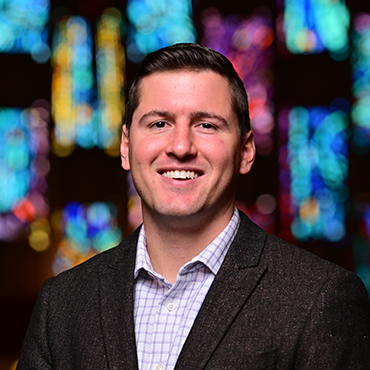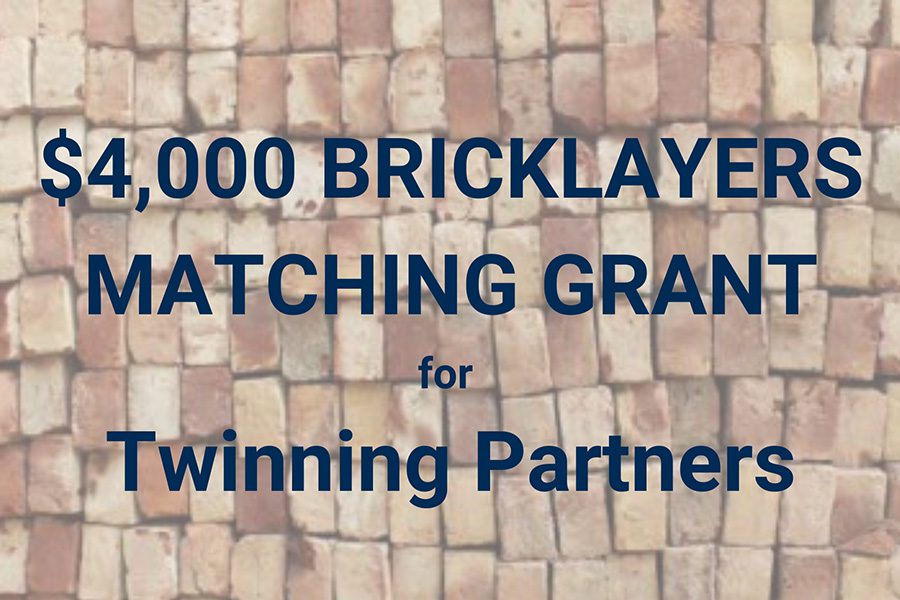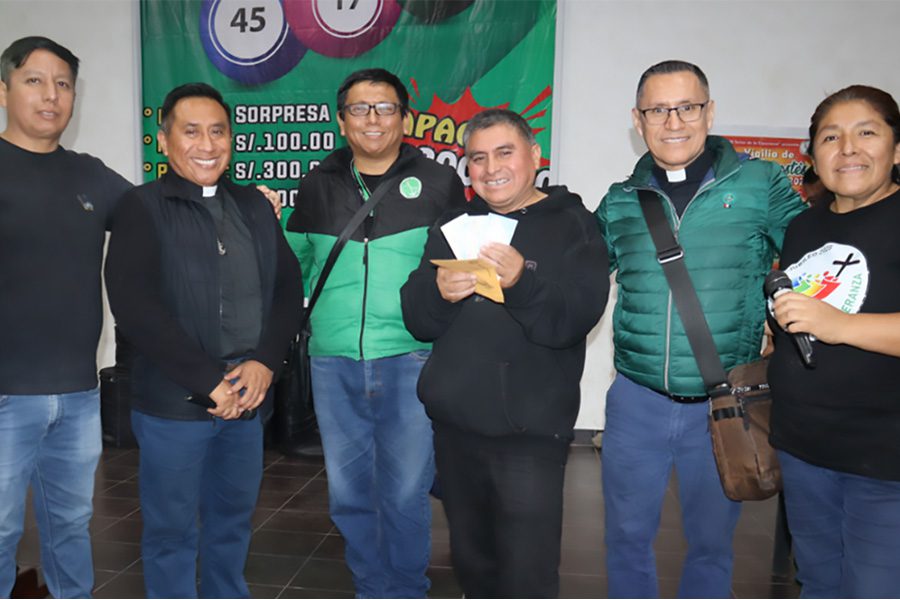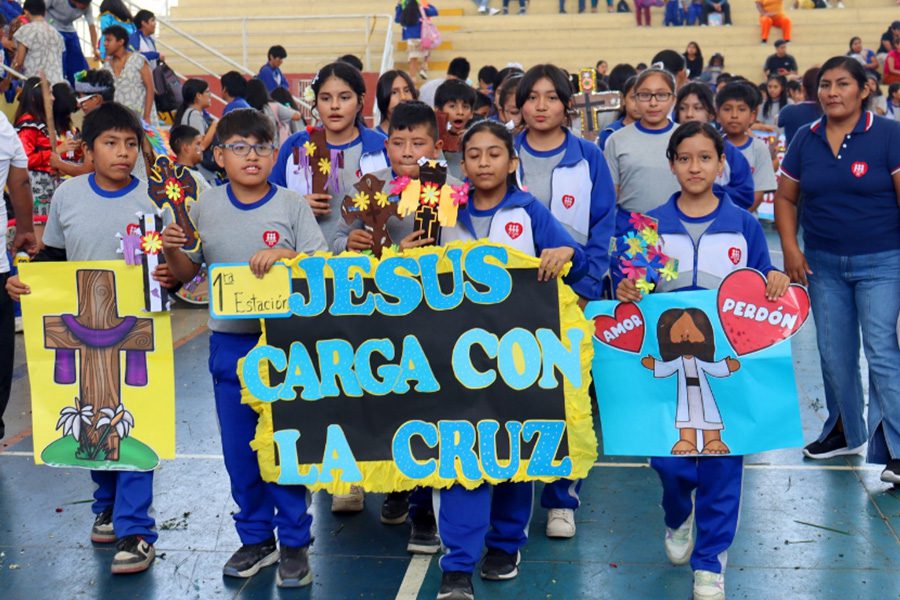Peru
Historical Background
The Congregation of Holy Cross first arrived in Peru in September 1963. Several priests from the United States came to assume the pastoral care of field hands and factory workers in a sugar hacienda on the coast named Cartavio.
In 1974, the Congregation turned the work in Cartavio over to a diocesan team and assumed leadership of three parishes in Chimbote. Chimbote was a growing industrial town in which many of the workers and their families lived in squatters’ villages on the city’s outskirts. As it had done previously in Cartavio, the Congregation lived among the poor whom they were accompanying and serving.
From Chimbote, in 1977, the Congregation expanded its work to include parishes in Canto Grande, which is a poor sector of the capital of Lima, and in Puno, which is among the indigenous aymaran community.
In 1981, within the boundaries of Lord of Hope Parish in Canto Grande, the Congregation established “Yancana Huasy” (literally “House of Work” in the language of the Incas). Yancana Huasy attends to the needs of children who live with physical and mental challenges, including Downs’ Syndrome, and their families. In 2018, Yancana Huasy received recognition as a finalist for the Opus Prize, which “recognizes unsung heroes who are conquering the world’s most persistent social problems.”
Since 2003, Lord of Hope Parish in Canto Grande has served as the hub of Holy Cross in Peru. The parish, which is divided into 19 churches and chapels, serves more than 200,000 people.
To better serve the complex and diverse needs facing the urban poor whom they serve in the parish, the Congregation established the Peyton Center (Centro Patricio Peyton) with the generous support of Holy Cross Family Ministries. The Peyton Center is a multi-purpose cultural center used for hosting meetings, groups, workshops, and special celebrations.
The Center also has begun a service-oriented, investigative team that looks critically at family life among the urban poor.
After a long history of collaboration, the Congregation’s mission in Peru joined with the mission in Chile to form one unified jurisdiction. The work of the Congregation of Holy Cross in Chile is now overseen by the unified District of Chile-Peru, a District of the U.S. Province of Priests and Brothers.
Holy Cross in Chile-Peru Today
Priests
Brothers
Men in Formation
Resources for Partnerships
Ministries in Lima
Peyton Center (Centro Patricio Peyton)
C. los Nogales 440, San Juan de Lurigancho 15412, Peru
Immersion group housing for up to 50 visitors in dormitory-style rooms with shared bathrooms; spaces fill up quickly in May-June.
Colegio Fe y Alegría No. 25*
A.H. Huáscar, Canto Grande, Lima 36, Peru
Rev. Jorge Mallea, C.S.C., Director
Yancana Huasy
Calle 12 s/n Altura paradero 1 UPIS Huáscar, Canto Grande, Lima 36, Peru
Rev. Anibal A. Niño, C.S.C., President
Parroquia el Señor de la Esperanza
Apartado 251, Lima 36, Peru
Rev. Anibal A. Niño, C.S.C., Pastor
Parish with 19 outstations serving 200,000 people.
Polyclinico Hermano Andres (Br. Andre Clinic)
Rev. Anibal A. Niño, C.S.C., Director
Administrative Office
Los Nogales 400, Canto Bello, SJL, Lima 36, Peru
Mrs. Kelly Chimeta Gutiérrez, Administrative Secretary & Lead Contact for Immersion Groups
*For educational ministries, note that the Peruvian academic year runs from March to December and is split into two semesters.
Experience with Immersion Groups
Mrs. Kelly Chimeta regularly coordinates immersion opportunities for groups at a variety of Holy Cross ministries concentrated in the neighborhood of Canto Grande, about an hour’s drive from downtown Lima, Peru. The Centro Patricio Peyton has space to house groups of up to 50 visitors. Immersion groups have provided a variety of support for ministries at the Parroquia El Senor de la Esperanza (Lord of Hope Parish), Colegio Fe y Alegria No. 25 (a high school), and Yancana Huasy (special needs programming for families of children with disabilities).
Mrs. Chimeta shared the following statement and resources:
Canto Grande is located in San Juan of Lurigancho, the biggest county in Peru. More than a million people live on the outskirts of this county and in poverty conditions.
These works served the poor in areas of education, health, family and pastoral ministry.
Most recently, through Infam, we have created programs that involved psychology students from a local university, Universidad Tecnológica del Perú. They work together with the psychologist offering workshops to adolescents in the school of our jurisdiction. When students from the CSC universities arrive to learn about our mission, we find tasks that can be developed during the time of visit such as repairing classrooms, embellishing areas of the school like gardens, helping a family by improving an area of their house, and observing and participating in classes for kindergarten and special needs classrooms.
Mrs. Chimeta’s resources for visitors to Peru: https://drive.google.com/drive/folders/13Gw1udFG8qnHpyJurJK8wpU1ug0zryFV?usp=sharing
Nearest Airport
Aeropuerto Internacional Jorge Chávez (LAP)
Av. Elmer Faucett s/n, Callao 07031, Perú
https://www.lima-airport.com/
Nearby Universities for Potential Partnership
| Institution of Higher Education | Rank in Peru |
| Pontifical Catholic University of Peru | 2 |
| Cayetano Heredia Peruvian University | 1 |
| Peruvian University of Applied Sciences | 4 |
| National Major San Marcos University | 3 |
| University of Lima | 9 |
| National University of Engineering | 5 |
| University of the Pacific | 10 |
| Saint Ignatius of Loyola University | 20 |
| Agrarian National University | 19 |
| Ricardo Palma University | 12 |
| University of San Martin de Porres | 11 |
| Norbert Wiener University | 14 |
| ESAN University | n/a |
| Union Peruvian University | 22 |
| Women’s University of the Sacred Heart | 37 |
| Antonio Ruiz de montoya University | 49 |
| Inca Garcilaso de la Vega University | 45 |
| Marcelino Champagnat University | n/a |
| Peruvian University of Sciences and Information Technology | n/a |
Health & Safety
The government of Peru does not require any vaccinations for entry. Visit the Center for Disease Control website for up-to-date vaccine and medication recommendations for U.S. travelers to Peru.
Mrs. Kelly Chimeta and the Holy Cross leadership in Peru regularly monitor and advise immersion groups on safety concerns in their ministry region. As of this report’s writing, they are confident that the Canto Grande region is safe for prospective immersion groups.
For every region of the world, the U.S. Department of State maintains updated travel advisories for U.S. citizens to consider when traveling abroad.
U.S. Embassy in Lima
Avenida La Encalada cdra. 17 s/n
Surco, Lima 33
Peru
Telephone: + (51)(1) 618-2000
Emergency After-Hours Telephone: + (51)(1) 618-2000
Fax: + (51) (1) 618-2724
Email: LimaACS@state.gov
https://pe.usembassy.gov/
Travel Documentation
The following documents are needed for entry into Peru:
- A passport that is valid for at least six months after the anticipated departure date. One blank page is required to receive an entry stamp from Migraciones (Peruvian Immigration authorities).
- Tourist visas for U.S. citizens are free and given out at the Peruvian port of entry.
- Evidence of return/onward destination
Visit the U.S. Department of State webpage on Peru for more information.

Partner With Us
Join our global Mission.
To further explore partnership opportunities with the Holy Cross Mission Center and our ministry partners around the world, contact Assistant Director for Community Engagement Michael Jezewak at mjezewak@holycrossusa.org or (574) 631 – 8884; or schedule a discovery call using the link below:
Explore Our Impact in Latin America

2025-26 Bricklayers Matching Grant Doubled in Honor of the Year of Mission
In celebration of the Congregation of Holy Cross’s Year of Mission, the Holy Cross Mission Center is delighted to announce an expanded $4,000...

Lord of Hope Parish Raises Funds Through Traditional “Bingo Kermesse”
On Sunday, May 25, the traditional “Bingo Kermesse” of the Parish El Señor de la Esperanza was held with great enthusiasm at the Rev. David Farrell...

From Preschool to Secondary: United by the Cross at Colegio Fe y Alegría no. 25
On May 3, the Feast of the Cross of May was celebrated with great enthusiasm at the Fr. David Farrell Coliseum of Colegio Fe y Alegría No. 25, under...
